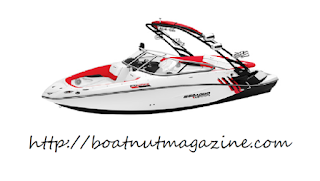Environmental Impacts of Boating Pollutants
| (Unless otherwise stated, material is from Connell and Miller 1984) Pollutant | Sources and Characteristics | Environmental Activity | Environmental or Human Health Effects |
| Detergents | Most cleaning agents, detergents and soaps Oil spill dispersants 29 Breaks down oils and greases on boats |
Accumulates in sediments Broken down by microorganisms |
Toxic to marine plants and animals Impairs breathing in fish 18 Reduces amounts of oxygen in affected waters Produces unsightly foam on the water surface |
| Marine debris | Commercial and recreational boating 11 Plastics, food wastes, packaging, lines, nets, fish cleaning wastes 3 Plastics degrade very slowly Some wastes become nutrients (see "Nutrients") |
|
Can choke / strangle sea animals 3, 11 Ghosts nets, and traps endanger divers 3 Can transport harmful non native species 11 Snagged by props and engines 3 Ruins recreational beaches 11 |
| Acidic & Alkalis Substances |
Battery acid, lye and other strong acids or bases in vessel cleaning products 13 Dissolves easily in water |
Increases natural acidity or alkalinity of water by decreasing or increasing pH respectively |
Toxic to marine plants and animals Increases the toxicity of other toxic substances, metals, other pollutants and chemicals Can irritate or damage skin |
| Metals | Paint particles from hydro washing, metal shavings from engine wear, and consumer products containing metals Dissolves according to water conditions |
Accumulates in sediments, marine plants, and animals Persistent in the environment Some metals broken down by microorganisms |
Toxic to marine plants and animals Changes the food web in the marine environment by eliminating certain species |
| Copper (Cu) | Used as a toxic agent in antifouling paints Dissolves according to water conditions |
Accumulates in sediments, marine plants, and animals Persistent in the environment |
Very toxic to fish when combined with zinc sulfates 16 Long term toxicity to marine plants and animals |
| Tributlytin (TBT) | Still used as a toxic agent in antifouling paint on aluminum hulls, outboard motors & lower drive units 4, 16 |
Accumulates in sediments, marine plants, and animals 16 Persistent in the environment |
Toxic even in small amounts to marine plants and animals, especially bottom feeders 16 TBT contaminated shellfish are dangerous to |
| Zinc (Zn) | Anticorrosive zincs and paint pigments Dissolves according to water conditions, which can make Zn more available to marine organisms 16 |
Persistent in the environment |
Toxic to marine plants and animals, even small amounts 15 |
| Oil / Fuel | Normal boat operation, fueling, engine maintenance, spills, runoff, and bilge discharge Dissolves slowly in water, clings to particles and sediments in marine environments |
Broken down by sediment microorganisms22 Accumulates in sediments, marine plants, and animals High accumulation in estuaries and intertidal areas |
Some components toxic to marine plants and animals even at low concentrations 24 Some components cause cancer, mutations and / or birth defects Behavioral changes in shellfish and fish 24 Discoloring and bad taste in flesh of fish 20, 25, 26 |
| Dusts and sediments | Vessel scraping and sanding, erosion during construction and urban runoff Heavy metals, nutrients, hydrocarbons, etc. adhere to dusts and sediments |
Sediment bound contaminants released to water if disturbed |
General lowering of water quality Burial of habitat, food and / or organisms |
| Nutrients | Runoff, sewage, erosion, garbage & detergents containing (P)hosphorous or (N)itrogen |
Used by marine plants and organisms for food (P,N) Accumulates in sediment (P) |
Increase in algae growth which decreases light and oxygen in the water (eutrophication) (N) can be toxic in higher concentrations |
| Solvents | Vessel maintenance & repair activities Paints, varnishes, paint removers and lacquers as well as degreasing agents Does not dissolve in water 13 |
Sink in water until they reach an impervious surface Acetone lingers in air and is transported to sediment & water |
Large amounts can cause dizziness, disorientation and unconsciousness in the user 2 |
| Anti-freeze | Used as engine coolant and freeze prevention during winter storage Improper use & storage creates leaks or spills 13 |
Fate similar to solvents 13 |
Ethylene glycol is deadly to humans, pets & marine organisms in low doses 2 Propylene glycol (orange/pink color) is less toxic than ethylene glycol (blue/green color) and is preferred for use in boats 7 |
To guarantee access to all of Boat Nut Magazine articles, pictures and featured services visit the official Boat Nut Magazine ©™ website. Be sure to reply to the Boat Nut Association registration on our site for the latest Boat Nut weekly and monthly news letters and opportunities.
Copyright 2015 © Boat Nut Media, Toronto, Ontario. All rights reserved. No part of this information/publications may be stored in a retrieval system, transmitted, or reproduced in any way, including but not limited to photocopy, magnetic, or other record, without prior agreement and written permission of the publisher, Boat Nuts Media ©™ No liability is assumed with respect to the information provided
Connect with the Magazine web site
Connect with the Magazine web site




No comments:
Post a Comment